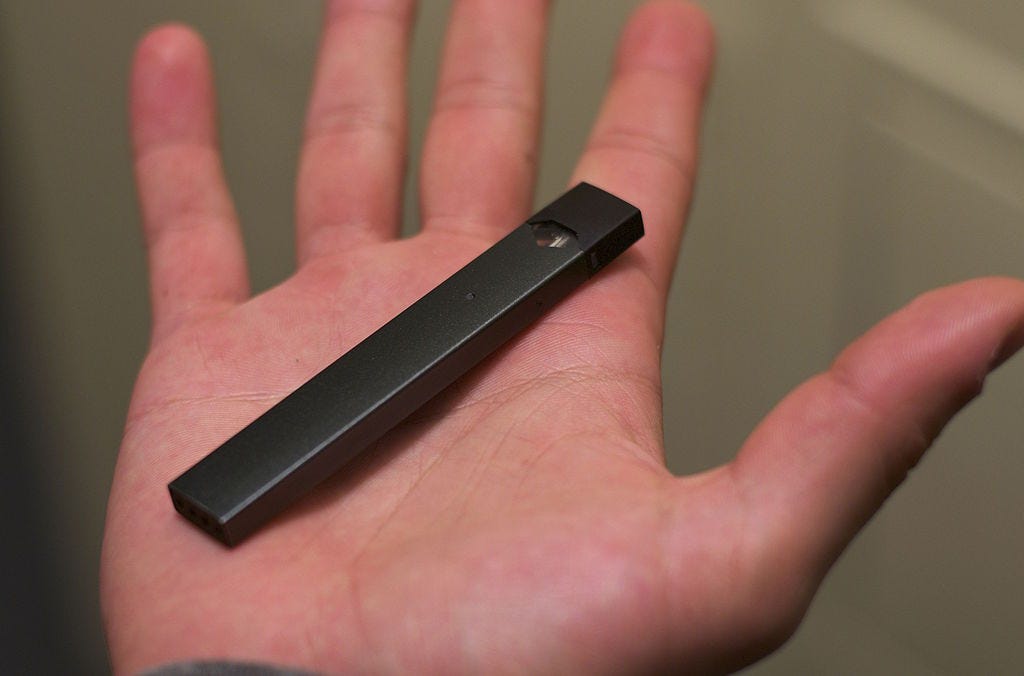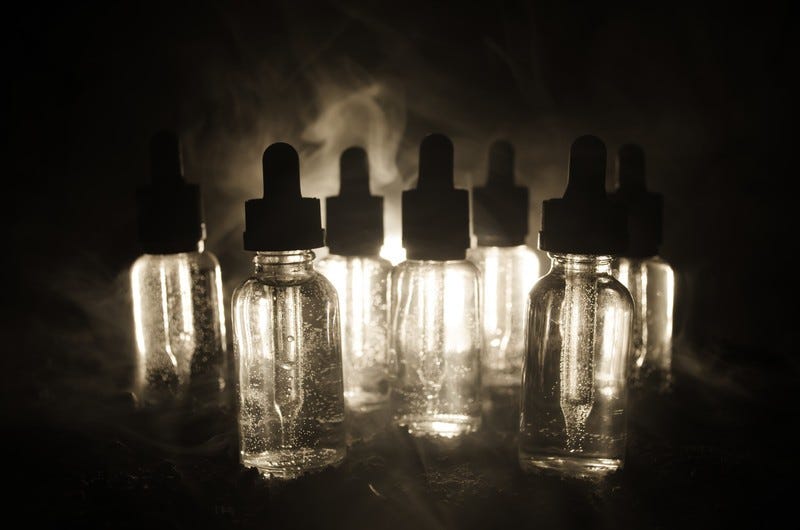Have you heard of Juuling? I would be surprised if you haven't.
It's the latest vaping craze and one that has got a lot of people riled up. You might have heard about Juuling in the latest college campus blog, or in the national press or even in correspondence from your son or daughter's school.
But what does Juuling mean, and is it something to worry about?
Technically, Juuling just means vaping with a Juul branded device.
Juul make pod mod devices that look like pod vapes and can be plugged directly into a computer USB port.
But Juuling has also become synonymous with other types of vaping, particularly when the media talks about underage vaping in schools.
What is different about Juul devices?
Juul devices have the most market share. According to market data, their devices accounted for 33% of e-cigarette sales in late 2017.
Juuls are not like big vape mod devices. They are small and flat and don't produce large clouds of vapor.
Because they are less powerful and don't burn as much e-liquid, the pod cartridges that are compatible with Juul e-cigarettes contain a higher concentration of nicotine.
While a box mod vaper might go through several ml of e-liquid each day, the Juul cartridges only contain 0.7ml of e-liquid. Some users will use one of these cartridges each day, but this is unlikely for newer vapers.
The e-liquid also has a nicotine salt base, which makes the vapor less harsh.
By design, Juul pod mods very similar to many other mouth-to-lung pod devices. But unlike similar devices, the Juul cartridges are not refillable.
Perhaps the main difference between Juuls and other vaping products, however, is that you are more likely to find Juul devices in regular stores and gas stations than vape shops.
'Juuling in the bathroom'
Juul devices have gained so much notoriety because of their perceived association with schoolyard use and underage vaping.
In some schools, the "Juuling in the bathroom" problem has become so serious that administrators have sent emails home with warnings about underage vaping and a particular brand called Juul.
Some media commentators have suggested that Juul devices are discrete and easy to hide, making them easier to use around school and even in classes.
While tobacco cigarettes use has been declining amongst teenagers, research suggests that many high school students are using e-cigarettes.
E-cigarettes are legally only available to be purchased by adults that are 18 and older. Online stores have strict age verification policies, but the widespread availability of Juul products in all kinds of shops make them relatively easy to get hold of.
Research indicates that the rapid market growth of Juul products has been driven by people in the 18-24 age bracket. Marketed as an alternative to tobacco cigarettes, the products are popular with consciences young adults who are more switched onto the dangers of tobacco.
Is Juuling safe?
Vaping is still relatively new and there is no long-term data about the effects of vaping.
But many experts agree that vaping is less harmful than smoking tobacco cigarettes.
Parents and medical professionals worry about e-cigarettes because, although they do not contain many of the same toxins as tobacco cigarettes, they do contain nicotine.
Each Juul cartridge "which contains enough e-liquid for around 200 puffs" has about the same amount of nicotine as a pack of cigarettes.
Minors should not use vaping products, but several respected health authorities advocate vaping as an alternative to smoking.
Public Health England declared that vaping is "at least 95% less harmful" than smoking tobacco.
The America Cancer Society agrees that switching from smoking to vaping could bring substantial health benefits.
This evidence is only relative to smoking. In addition, some parents are concerned that vaping products will encourage kids to take up smoking.
Teenage smoking has dropped to a very low level. The National Institute on Drug Abuse found that just 4.2% of 12th graders smoked cigarettes daily in 2017, compared with 24.6% in 1997.
It is not clear what has caused this dramatic shift downwards but the growth of vaping and the perception of cigarettes will undoubtedly have played a part.
Image credit: "Juul in Hand" by Mylesclark96 is licensed under CC






Leave a comment
This site is protected by hCaptcha and the hCaptcha Privacy Policy and Terms of Service apply.